Table of contents
Who means Om?
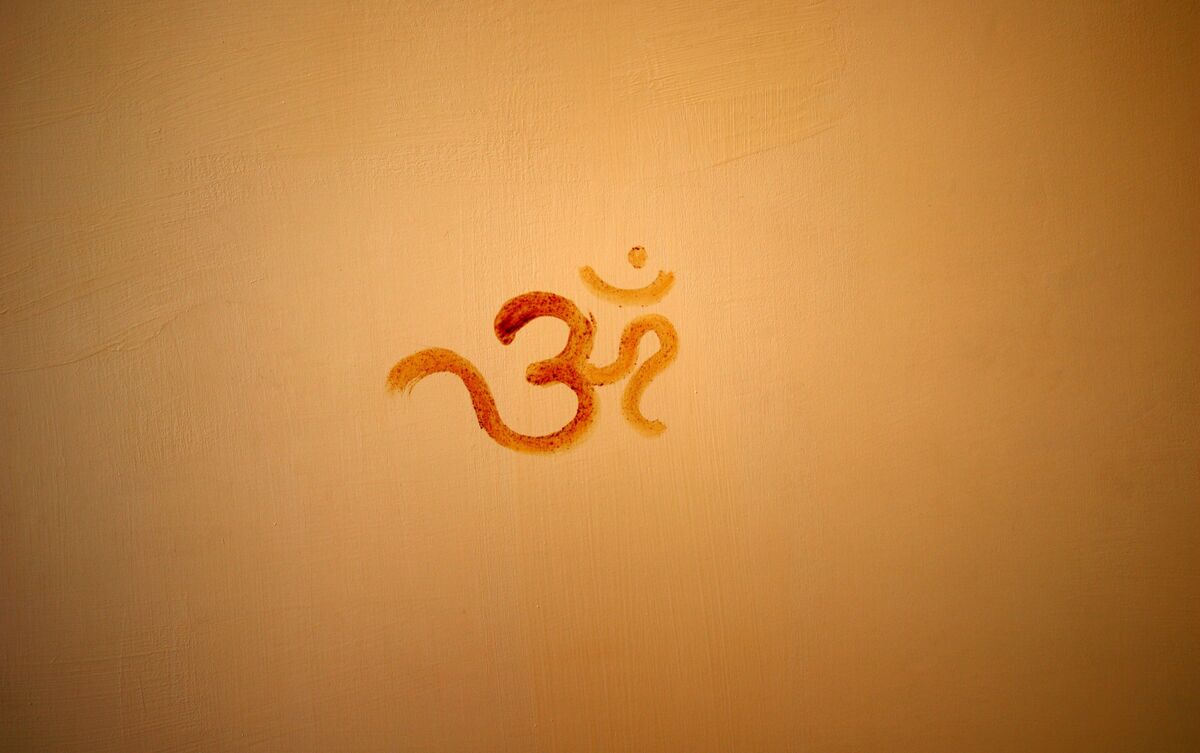
Om is one of the sacred mantras that are part of religions such as Hinduism and Buddhism. It is well known for its use in other aspects, such as in meditation and during yoga practice.
It is worth mentioning that the mantra can be seen as Ohm or Aum. This is a sacred sound and known as the sound of the universe. Through its history, it is possible to understand the importance that the symbol has for several religions and their practitioners, as well as how it can impact people's lives.
The sound is capable of benefiting various aspects of life and can bring with it positive energies that cause change. Want to know a little more about the Om symbol? Read on!
Understanding Om

One of the ways to understand Om is to resort to its history, in which one can understand that the vibrations produced by its sound are so strong and positive that they can unify everything around. That is why it is considered powerful.
In addition, such vibrations also promote energization, which is beneficial for the body. Thus, chanting using Om is common in times of meditation because it brings positive energies to the chakras.
To understand more about Om, it is also necessary to observe its aesthetics. Formed by several curves, a crescent and a point, each of its details symbolizes something distinct. Are you curious? Learn about the origin and history of the Om symbol below!
Source
The origin of Om can be directly associated with Hinduism. The first mentions and meanings attributed to the sound were through the religious practices of these regions and show the symbol as something extremely important.
As it brings good vibrations, Om is used to define a feeling of full happiness, a state in which the human being is only consciousness and lives in harmony with himself. From the definition of its origin, it came to be assigned to several important issues of Hindu religions.
History
The oldest record we have of the Om symbol, until the present moment, is a sacred text from Hinduism, Mandukya Upishad. This text talks about the symbol, emphasizing that it is something imperishable and that it transcends its own time.
This same text was also associated with one of the six Hindu philosophies, Vedanta, in which Om is considered inexhaustible, an infinite knowledge and the essence of all that one has - even life. With this meaning, it came to represent the sacred trinity of Hindu gods: Shiva, Brahma and Vishnu.
Om Symbol
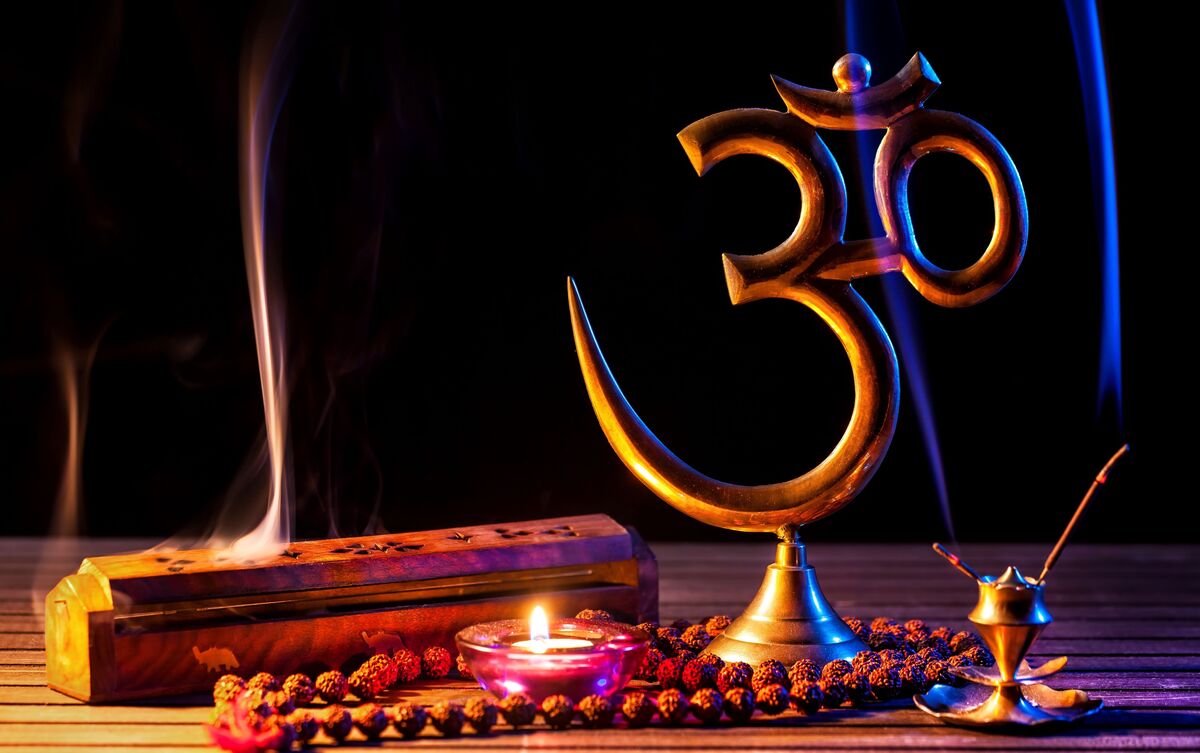
To understand a little more about the symbolism behind the Om and all that it can reveal, it is necessary to understand the small details responsible for its complete formation.
As it consists of three curves, a semicircle (or crescent) and a dot, each of these has a distinct meaning and can bring a greater understanding of the importance that Om carries. See more about the details that make up the symbol below!
Major curve 1
The major curve 1 shows about the waking state. It is in this state where the consciousness becomes turned inward and this happens through the gates of one's senses.
Thus, the size it has can be interpreted as the most common state of human consciousness. Therefore, it occupies a larger space when placed in comparison with the other elements present in the constitution of Om.
Curve above 2
The above curve 2 carries a deeper meaning and speaks about the deep state of sleep in which human beings can find themselves. This state can also be understood as unconsciousness.
Therefore, it is the moment in which the mind is relaxed, a state of sleep in which those who sleep do not wish to think about anything, nor go through any kind of situation. This includes dreams, which appear in the mind in moments of deep sleep.
Middle bend 3
Located between deep sleep and the vigil state, the middle curve 3 carries the meaning of dream. This point speaks about the individual's consciousness at this moment, when he is more turned inward.
Thus, the dreamer has the vision into himself and contemplates a different world through dreams. He will have something much more enchanting to experience through his eyelids and in the moment of deep sleep, in which he meets with his dreams.
Semicircle
The semicircle that appears in the Om symbol represents illusion. In this case, it refers to everything that can somehow affect a person's life, preventing him from achieving his happiness in life.
The illusion causes this person to deeply believe in the idea fixed in his mind and this ends up causing a strong impact in his life, reaching a point where nothing else around will be perceived by him. His focus will be totally focused on this thought and nothing else. Thus, there is a huge difficulty to find happiness, by facing only what is illusion.
Point
The dot that appears in the Om symbol speaks about the fourth state of consciousness of people, which in Sanskrit is known as Turiya. In this case, it can be seen as the absolute consciousness.
Through the symbolism of the point, it is also possible to understand that it is through the point that one finds the happiness and peace so desired. In this way, one starts to have a much deeper connection with the divine, the maximum that one can have of connection in this way.
Meaning of Om or Aum in Hinduism
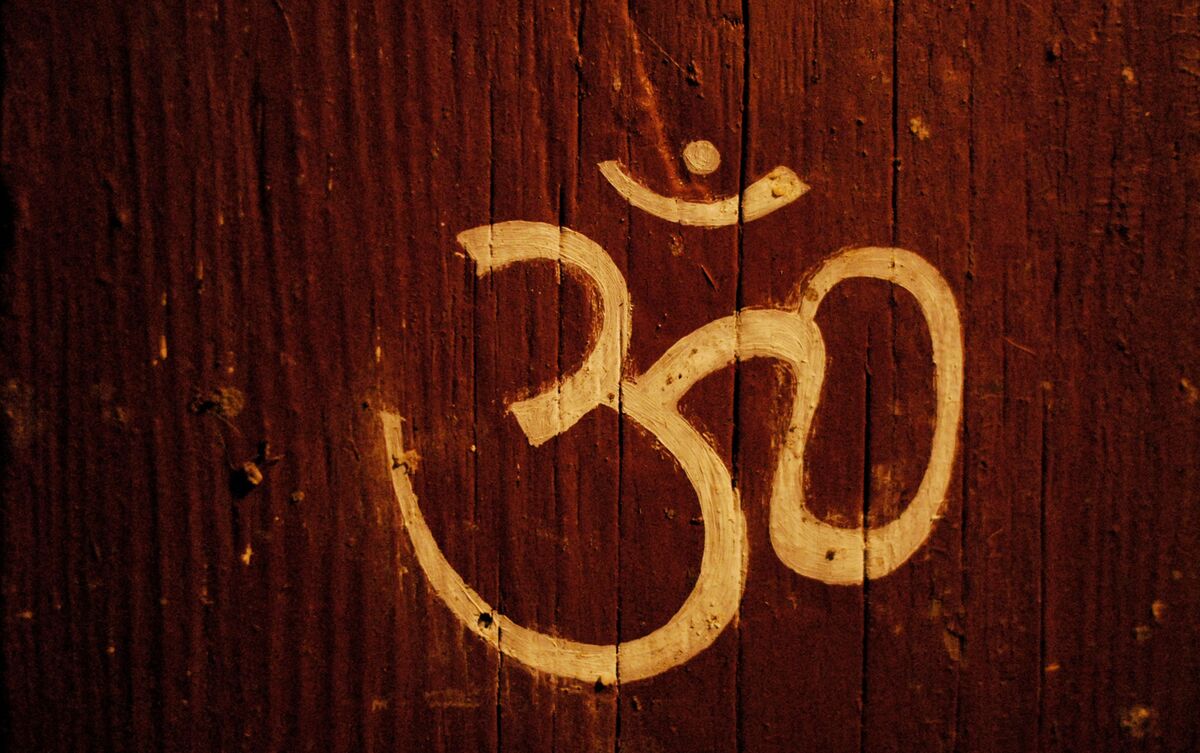
Among the various ways of understanding this very important symbol of Hinduism, there are some stories about it that point out that the world was created after chanting with Om.
That is why this chant has come to be used for any situation in which one has a promising start. Even, this is something that is very much used for people who start some kind of enterprise, so that there is prosperity and success.
Some stories suggest that the origin of the Om symbol comes from yoga and that it may be an alternate emergence for the symbol, since its origin is not certain. See more on these aspects below!
Levels of consciousness
The levels of consciousness are shown by the symbols that make up the Om whole. In the chants, 4 syllables are considered, the last one being silent, but all of them assume different positions of meaning, depending on what is being considered.
Thus, these levels are shown by: wakefulness, sleep and deep sleep. This last one, considered as silent, has, in fact, the meaning of silence between one recitation and another of the mantra. In this way, these are considered the levels of Om consciousness and the last one transcends all the others.
3 gunas
When considering the energy of the syllables that make up Om, each is represented by the 3 gunas, which are material energies and have the power to cause influence in the lives of all living beings in the world with their force.
"A" represents tamas: ignorance, inertia and darkness. "U" represents rajas: dynamism, activity and passion. "M" represents satva: light, truth and purity. The silent sound, in this case, represents pure consciousness, which is a state that, again, transcends these 3 gunas.
Hindu Gods
If the aspects of the letters and sounds of Om are taken into consideration in relation to the Hindu gods, it can be understood that each of the letters is meant for one of them and the symbol can be interpreted differently.
"A" represents Brahma, who is the creator. "U" represents Vishnu, who is the conservative god. Meanwhile, "M" represents Shiva, who is the destroyer god. The silent sound represents reality, which goes beyond the deities and their powers.
3 aspects of time
If, in this case, we consider the 3 aspects of time, to understand the meaning brought by each of the letters of the Om sound in the mantras, it is possible to perceive details about the present, the past and the future.
"A" is the representative of the present, "U" will be the representative of the past and, finally, "M" will be responsible for representing the future. The silent sound, in this case, brings aspects that are not directly involved with this, because it represents reality and something that goes beyond time and space.
3 Vedic scriptures
The Vedas are the oldest sacred scriptures in history and are part of several streams of Hinduism. In this case, as they relate to the symbol Om, this can be seen through three specific scriptures, Rigveda, Yajurveda and Samaveda.
These scriptures are considered as powerful religious hymns dedicated to Hindu deities. They form their philosophical, cultural and social values. Hence, they also relate to the Om symbol as this is about religious mantras as well as those using this symbol.
In the Bhakti tradition
The Bhakti tradition relates to the Om symbol because it emphasizes the perception and understanding of supreme consciousness, just as this symbol speaks about deep consciousness.
Bhakti is a living sense of oneness and is also shown by drawing and following a path of devotion, which leads people to self-realization based on love and a state of contemplation and surrender to the gods.
3 worlds
The Om symbol counts as trinary symbolism for Hindus in many aspects. This can also be shown through the 3 worlds, which speak about the earth, space and sky.
Therefore, as for Hindus the sound of Om is the creator itself, the mantras that are made based on it are the sources of all things and this sound shows the inertia, the true essence and the principle. Therefore, it is added to the mantras through these distinctive trinarians.
Om Mantras
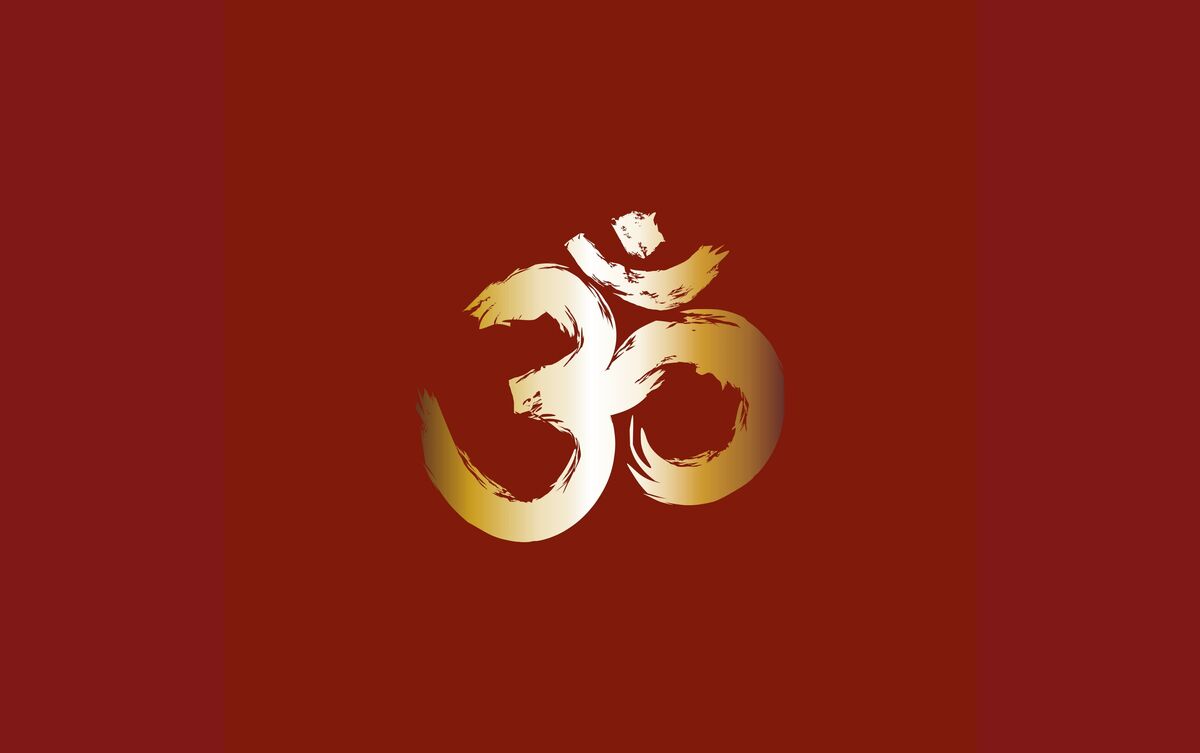
Om mantras are uttered at the beginning of practices that have some spiritual intent. But this type of chanting can also be noticed and chanted in yoga classes and can be uttered by anyone.
As the symbol also represents the states of life (present, past and future), besides silence, it brings an aspect that transcends time. Therefore, in practices like yoga, in which these mantras are chanted, it is used only for the experience of the present.
In this case, the pronunciation of Om allows the person to enter in a deeper contact with himself and can abstract other aspects of his life, like the past and the future, so that, in the moment of relaxation, none of them exist in his mind. Do you want to know more about Om mantras? See the details below!
Om Mani Padme Hum
Om Mani Padme Hum is a well-known mantra in Buddhism. Its main purpose is to invoke issues such as union with the universe, wisdom and compassion. Therefore, it is used in accordance with the masters of Buddhism and at specific times.
The masters indicate that this type of mantra is used in most of the teachings that were made by the Buddha. Therefore, it proves to be one of the most important and well-known for practitioners of the religion and has great significance.
Om Namah Shivaya
Om Namah Shivaya is one of the most powerful mantras in which Om is used. Its meaning expresses a direct reverence to Shiva. It can be interpreted as an awakening to the divine, which comes from within the person who chants it.
According to his history, each individual has this within him, but it needs to be awakened. That is why the mantra is so powerful: it is capable of awakening this within each one.
Shiva represents a great source of wisdom and absolute knowledge, which has the power to purify and bring about self-knowledge.
Om Shanti, Shanti, Shanti
The word Shanti, which accompanies Om in the mantra Om Shanti, Shanti, Shanti, means peace in both Buddhism and Hinduism. In the mantra, it must be repeated three times to represent the peace of the body, spirit and mind of the person who utters it.
The importance of this mantra is so great that it can be seen by the fact that in Hinduism all its teachings end with Om shanti, shanti, shanti. The purpose of this is always to end the teachings evoking the much desired peace.
Using Om
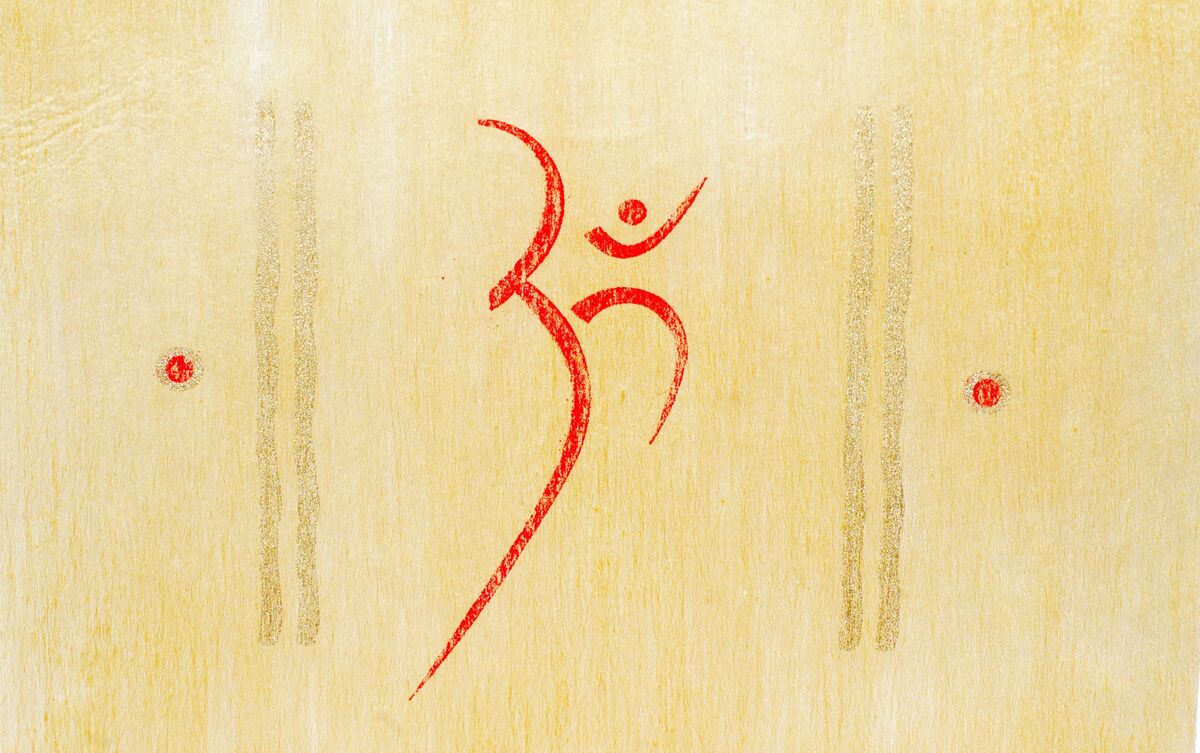
As much as the Om is used in a sacred way through Hinduism and Buddhism, the symbol also came to be adopted later by people who do not fit into the two mentioned religions.
Because of its powerful meaning, Om has come to be used in other situations in order to meet spiritual needs and to promote the peace it demonstrates in its deeper meanings.
Therefore, understanding a little more about its history, its importance and other details is essential in this scenario. Want to know more about the Om symbol? Keep reading!
Correct pronunciation of Om
The correct pronunciation, which is usually taught in yoga schools in India, is Aum. Therefore, when following the teachings, it is highlighted regarding the symbolism of each of the letters contained in the pronunciation.
They form the three sounds, which are intended to create the different vibrations in the body for both religious and yoga practices. The "A" vibrates around the navel, the "U" vibrates in the chest and the "M" in the throat.
How to use Om
Om can be used in various mantras that help in important points, such as concentration, and also help to energize the charkas. It can be used for some distinct purposes, which need to be taken into consideration by each person.
Depending on the intention, the Om can be recited aloud, for the purpose of healing the physical body, and can also be chanted at medium volume, which aims to act on the mental body. It can also be used mentally, when its purpose is to care for the emotional.
Om in yoga
In yoga, mantras that rely on Om are used to calm the mind and central nervous system so that the practice can be performed. From a physiological standpoint, this use of Om makes it easier for yoga to occur because of the calming effect.
In this way, all the ills outside can disappear for a moment because mantras promote relaxation. From the moment they are chanted, stresses are left behind. This symbol can also be used to define the start and end time of a yoga practice.
Om in meditation
In meditation, mantras with Om also have a similar purpose as in yoga,. As it is necessary to disconnect from external problems and situations that afflict, this powerful mantra is intended to relieve stress and rest the mind, so that it stays away from these issues.
So it also has this calming effect, which makes you able to connect more deeply with your meditation, without thinking about anything that might cause a bad feeling.
Benefits of Om
The biggest benefits that can come from mantras with Om are the relief and calming effects. The mind is relaxed and can make the individual feel much more connected to their thoughts.
In the long run, this practice can have much better effects as it can provide a much greater peace for its practitioners. Another way to understand it is the fact that when chanting the Om sound, human beings vibrate at a 432Hz frequency and this causes them to connect with nature in a very deep way.
What are the influences of Om in the West?

The main influence of Om in the West is precisely in relation to yoga practices, which have become increasingly popular. As these practices use mantras with Om as a calming effect, many people have come to know more about this powerful symbol of Hindu and Buddhist religions.
Yoga has become a very common practice over the years, because many people started to look for something that would make them relax and find mental balance. Thus, the symbol started to be used outside religions and by non-practicing people.
Due to the use of mantras as a relaxing and calming effect, to start and finish yoga and meditation practices, both started to be seen with other eyes by the West, something that is common in other regions since the first records that we have of this symbol in history.

